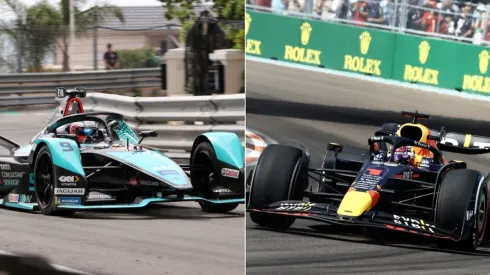When talking about car competitions, without a doubt the most important is Formula 1, which has attracted the attention of the public car fans for decades. However, a few years ago a category appeared that is similar to Formula 1 in many aspects, but has its differences: Formula E. Here we tell you the main differences between both.
Formula 1, often referred to as the “Great Circus” is one of the oldest competitions and undoubtedly the most emblematic of motorsports worldwide. The first season took place in 1950 and ever since it has delighted speed fans around the world with its iconic Grands Prix and extraordinary champions.
Formula E is much more recent (here we have the first difference between the two competitions, Formula 1 is older): the first season was 2014/2015, so the category is not even 10 years old. Of course, this is not the only difference, but there are many more. Here we leave you other differences between Formula 1 and Formula E.
What are the main differences?
The differences are several, especially in the technical aspects where we are not going to delve. Here we will simply limit ourselves to the most notable differences between the two Formulas:
1) The first is the one that perhaps many already know: Formula 1 engines use gasoline as fuel, while Formula E engines are fully electric.
2) The dimensions of the cars are different. A Formula 1 car is around 4.8 meters long, while a Formula E car is 20 centimeters longer.
3) The calendar: in Formula 1 we have 23 Grand Prix and except for the United States, which has two GPs (the Miami GP and the United States GP), in the other Formula 1 host countries only one Grand Prix is run. Formula E has 16 e-Grands Prix, and it is common for there to be more than one at the same venue.
4) In general, Formula E races last about an hour, while in Formula 1, the competition usually lasts about two hours.
5) The tires used on the 18-inch Formula E are designed for all types of weather. Drivers may not use more than four new rear tires and four new front tires per event.
For Formula 1 there are five types of tires: soft red, medium yellow, hard white, green intermediate for rain and blue for heavy rain. Non-wet tires are also divided into ranges from C1 (hardest) to C5 (softest).
6) In Formula E, the pit stops will have a quick battery charge in less than 30 seconds and tire changes in the same time. In Formula 1, pit stops have an average stop of 2.5 seconds, where there is only a change of tires (or the wing if necessary).
7) In Formula 1, the qualifying sessions are divided into three: Q1, Q2 and Q3, in which the drivers are eliminated depending on their times, until reaching Q3 where the top 10 are decided and the poleman is the one who makes the best time. In Formula E, qualifying is head-to-head elimination duels. It begins with a group stage in which 11 are divided into each depending on their position in the world drivers’ championship. The first four of each group advance to the round of 16, then to the quarter-finals and so on until reaching the final, in which the winner will be the one who starts in pole position.
8) There is also a difference in weight: a Formula 1 car can weigh between 790 and 795 kg, while Formula E cars weigh 840 kg.
9) The costs of a Formula E team are around 25 million euros (just over 26.3 million dollars). A Formula 1 is undoubtedly much more expensive: currently a budget cap has been imposed, so that no more than 145 million can be spent.
10) Differences in the duration of the calendar: the first race of this 2022 Formula 1 season was in March and will end in November, while Formula E started in February and will end in August, of course this has to do with the fact that he has 7 e-Grand Prix fewer.





